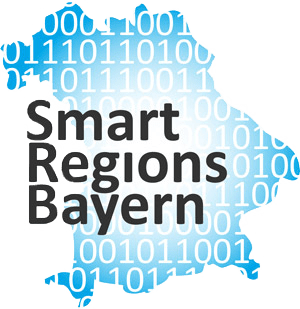3D City Model
SDDI – Model Regions in Bavaria
Establishing an open regional data infrastructure
This project is set up to build and implement an open, regional data infrastructure and 3D map application. To that end, a scalable “construction kit,” built in an open-source software environment, is needed to address data and services usage.
Content
<em>About the project</em>
Already today, municipalities and counties collect numerous data from a variety of areas, such as mobility, energy, agriculture, water management, tourism, and logistics.
But what is the added value of this data, and for whom? How can this data be managed, mapped, and made accessible in a meaningful way so that even private citizens and non-experts can contribute and participate?
Recently, the concept of Smart District Data Infrastructure (SDDI) has emerged as a comprehensive solution to these dilemmas. Likewise, the goal of the “SDDI Model Regions in Bavaria” project is to develop and operate an open regional data infrastructure, a 3D map application, and eventually a scalable “construction kit” for the use of data and services. Most importantly, this infrastructure will be based entirely on open-source software.
The six municipalities and counties participating in the project “SDDI Model Regions in Bavaria” are:
- District of Freyung-Grafenau
- District of Neustadt a.d. Waldnaab
- District of Wunsiedel
- City of Grafing
- City of Haßfurt
- City of Garching
The goal of the project is the development and operation of an open regional data infrastructure as well as a 3D map application. A scalable “construction kit” for the use of data and services is to be created, based on open source software.
In each model region, a catalog service (central “data interface”) will be set up to enable access and use of different data sets and services. It will be prepared and provided by TU Munich using the open-source tool CKAN. Additionally, a 3D map application based on the 3D component of the master portal will be built for each model region. Virtual City Systems supports all model regions in their elaboration and implementation of individual use cases and the development of the 3D map application.
Until spring 2021, the findings of the project should result in an SDDI guide that will make it possible to transfer the concept to other municipalities and districts. A virtual community will also be cultivated so that each region can share its experiences and findings and help drive the SDDI concept forward in the future.
Further links

